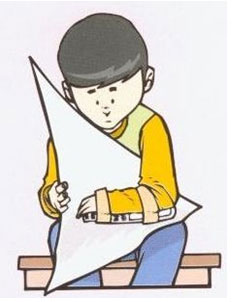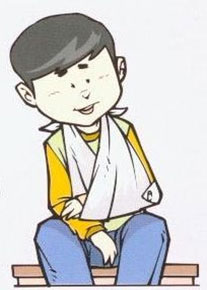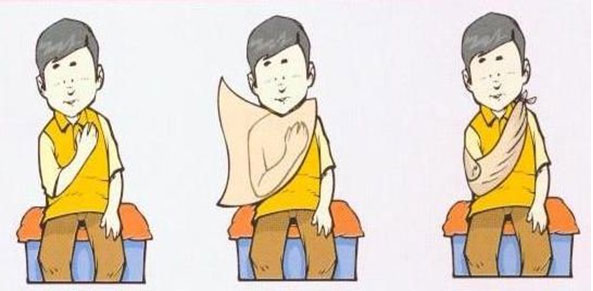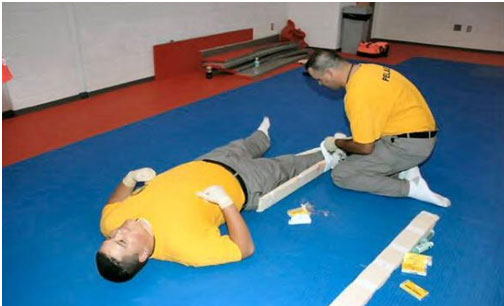INTRODUCTION
What is a Fracture?
A bone fracture is a break in a bone. Fractures are classified as open or compound when either or both ends have broken through the skin.
The severity of fractures increase with age. Children’s bones are more flexible and less likely to break. Falls or other accidents that do not harm children can cause complete fractures in older adults. The elderly suffers from fractures more than children because their bones are more likely to be brittle.
SYMPTOMS AND SIGNS
What are the symptoms and signs of a fracture?
- Pain at or around the site of the fracture
- Swelling over the area which can be accompanied by discoloration
- Loss of function of the injured area
- Bruising of the overlying skin
- Unnatural position or abnormal shape of the affected limb
- Pain on any attempts to move the limb
- Abnormal movement of the affected part
- Loss of Function of the limb
- Bone protruding through the skin
COMPLICATIONS
Some of the early complications of fractures include:
- Injury to adjacent blood vessels causing bleeding
- The fractured end may damage adjacent organs such as the brain, lung or bladder
- Wound Infection – more common for open fractures
- Shock due to massive bleeding
Late complications of fractures are:
- Delayed union of the broken ends
- Nonunion – the broken ends fail to unite back.
- Malunion, causing deformity or abnormal shape
- Joint stiffness due prolonged immobilization
FIRST AID FOR FRACTURES
Aim of First Aid for broken bones are:
- To prevent further damage
- To reduce pain
- To make the patient feel comfortable
- To get medical aid as soon as possible
If broken limb is suspected but it is not piercing the skin (closed fracture) you need to splint the limb. Splinting helps to reduce pain and prevent further injuries to adjacent tissue or organs.
How to make a splint:
Fractured forearm (not near the elbow)
The hand should be moved to a 90-degree angle and kept close to the chest. It should be immobilized in this position.
Move the hand as gently as possible, and if the pain is too intense, do not move it at all.
Apply a splint using a hard, rigid and straight stick. You can also use folded newspaper or magazine.
Secure the splint well underneath the injured forearm covering both joints above and below the fracture site. Make sure it is not too tight by checking for discoloration and numbness of the fingers.
See illustrations below:
 |
 |
Then, support the arm with triangular bandage and go to the hospital for further management.
Fractured forearm (near the elbow)
- Immobilize the arm in the position found.
- Check the pulse
- Get Medical Attention immediately.
Fractured clavicle:
- Bend the elbow of the fractured side, with fingers towards the opposite shoulder.
- Apply a sling using triangular bandage.
- Make is as comfortable as possible.
- Get Medical Attention
See illustration below :

Fractured lower limb;
- Call for an ambulance and in the meantime, secure the leg so it doesn’t move.
- Look around for something stiff and hard to use as a splint, such as a heavy, rigid stick, a rolled pack.
- Apply two splints, one on the inner leg from the foot to the inner thigh, and the other, on the outside, from the foot to the armpit. You could even the normal leg towards the fractured leg and secure them together for added support.
- Make sure it is not too tight.
- If you could not find any materials to make a splint, you can just secure the injured limb to the other uninjured limb to keep it stabilized and immobilized.

Some Precautions In Providing First Aids For Fractures
- In case of a broken bone that pierces the skin (open fracture), you may need to apply pressure to control bleeding, but avoid pushing on any bone that is protruding. This is when those sanitary napkins come in handy!!
- Don’t ever try to straighten a broken bone or return the affected limb to a natural position.
- Don’t touch or clean the wound of an open fracture as this can cause infection.
- The splint must extend beyond the injured area to keep the limb from moving. Try to cover the joint below and above the injury with the splint, do not over tighten
- Check the area frequently for swelling, paleness or numbness and loosen the splint if needed
Call for medical help straight away if:
- There is a suspected broken bone in the head, neck, or back.
- There is a suspected broken bone in the hip, pelvis, or upper leg.
- You cannot completely immobilize the injury at the scene by yourself.
- There is severe bleeding.
- An area below the injured joint is pale, cold, clammy, or blue.
- There is a bone projecting through the skin.
PREVENTION
Accidents that result in fractures can occur anywhere. Here are some advices to prevent fractures:
- Practice safety precautions in whatever activities that you do.
- Wear protective gear while biking, roller blading, and participating in contact sports. This includes helmets, elbow pads, knee pads, and shin pads.
- Create a safe home for young children. Gate stairways and keep windows closed.
- Teach children how to be safe and look out for themselves.
Supervise children carefully. There is no substitute for supervision, no matter how safe the environment or situation appears to be.
REHABILITATION
Rehabilitation involves light movement of the joints and tissues surrounding the injury.
Post fracture rehabilitation is aimed to prevents stiffness of joints due to prolonged immobilization
It also helps increase blood flow which will aid the healing process.
REFERENCES
- www.medicinenet.com/fracture/article.htm – Cached – Retrieved 2011-01-22
- Bone fractures: cause, symptoms, treatment options, prevention – www.mamashealth.com/bodyparts/fracture – Retrieved 2011-01-22
- http://www.flhsmv.gov/fhp/academy/classacts/class114/images/114PG060607d.jpg
| Last Reviewed | : | 11 Jun 2012 |
| Content Writer | : | Dr. Norizzati Bukhary bt. Ismail Bukhary |
| Accreditor | : | Dr. Rosnah bte. Ramly |







